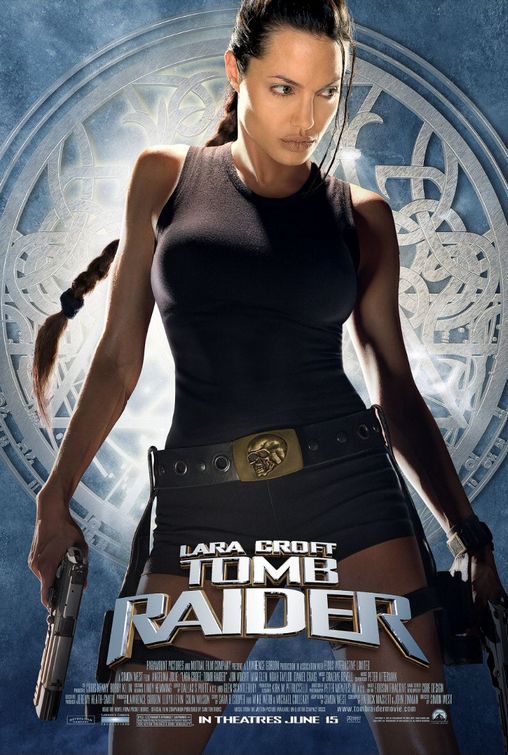
The eponymous Lara Croft Tomb Raider: The Cradle of life (2003) is a complex character within gendered cinema. On the one hand she is a seductive, sexy and capricious action heroine who likes to get down and dirty yet, on the other she is a strong, confident and highly educated woman. This "juxtaposition of physical prowess and sexuality" continues to produce a great deal of ambivalence among feminist and non-feminist commentators; therefore, her character seemingly stands in a grey area.
The concept of Lara Croft evolved from a video game created by males. This perhaps provides an explanation and an understanding to the full and curvacious body form the character of Lara Croft displays. It is presumably through the micro elements of the construction of film that the "scopophilic gaze", where women are set up as objects of desire for male satisfaction, are prevalent. In the film, male director Simon West proceeds with fragmenting actress Jolie's body so the camera at various points sits comfortably with her breasts, a part of the female body that heterosexual men find provocative, and her face with the former demanding most attention. Further evidence of the sexualisation of Croft is within the shower scene. It is erotic with its focus on her curvacious sillouhette, rounded off with a hint of her breasts. As an audience we are put in the position of her male servant, observing Jolie's naked body from behind yet, it seems her character is still in control and is even taking advantage of her sexuality through instances such as this. Therefore, it is clear to see how Croft is being manipulated to stimulate male audiences yet, within this idea Croft seems to maintain power by realising and advertising her sexual potential though never allowing a man to sexually pursue her ultimately, establishing a balance.
If the shower scene is to be argued as a orimary stimulus for men, the film never the less is not short of a counterpart for the female audience. The film includes a male shower scene in which a very toned Daniel Craig (Alex) emerges naked out of the shower, to be covered in an Austin Powers like way, by various well placed furniture around the room. Thus, again restoring a balance between the sexes, which is ultimately what feminists seek; equality amongst men and women. In this way also though, Lara Croft can be seen to go beyond establishing gender balance and can even be argued to overpower patriarchal dominance presented through the various masonic like institutions of the illuminate and the male dominated auction house. Her ease within a male environment or even her contempt for it, is shown by Croft putting her feet up on the chair in front in a public auction.
Ultimately, Croft lives in a male world as portrayed by her presence as one of the only females within the film. Sadly though, it is only too overt that Croft is a product of this male society being brought up by her father single handedly. Though, perhaps Croft represents an ethereal ultimate human, a mixture of traditionally male traits balanced by a female intuition. Indeed, the context in which Lara Croft the video game character emerged, was one of Spice Girls "girl power", and so it is understandable why commentators would debate the films over riding ideology though, perhaps Croft merely represents the expectations of modern women, brains and beauty.
No comments:
Post a Comment